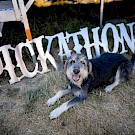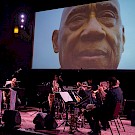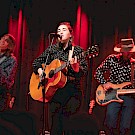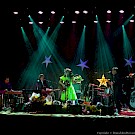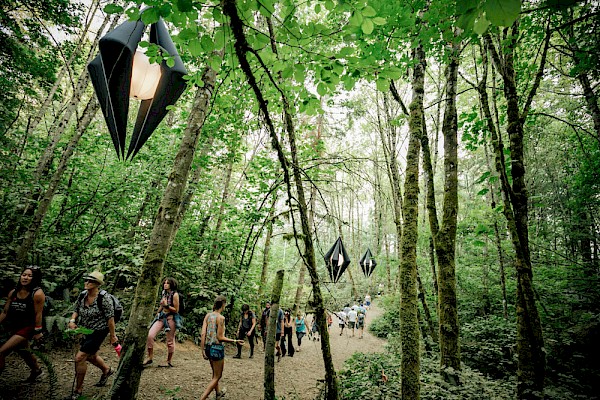 A pathway in the woods at Pickathon in 2018—click to see more photos by Tojo AndrianarivoWhen writing about the return of something, it is hardly possible to navigate the narrative without at least alluding to the factors that compelled the necessity for a comeback in the first place. Yet as one of Oregon’s—and the country’s—most revered music festivals prepares for its long-awaited return to the bucolic confines of Pendarvis Farm in Happy Valley, the sour of the world’s previous two-and-a-half years must be skimmed ever so for the sweet parts to rise to the top.
A pathway in the woods at Pickathon in 2018—click to see more photos by Tojo AndrianarivoWhen writing about the return of something, it is hardly possible to navigate the narrative without at least alluding to the factors that compelled the necessity for a comeback in the first place. Yet as one of Oregon’s—and the country’s—most revered music festivals prepares for its long-awaited return to the bucolic confines of Pendarvis Farm in Happy Valley, the sour of the world’s previous two-and-a-half years must be skimmed ever so for the sweet parts to rise to the top.
Pickathon, like a lot of music festivals across the globe, was forced to cancel in 2020 on the heels of the Covid-19 pandemic. Again, in 2021, the festival was put on the shelf, though this time with a newfound optimism that its resurgence in 2022 would demand big changes for the small but widely influential gathering.
“It was just unspoken that this was going to be an important one, a special one, for the first one back,” Nicholas Salas-Harris says, Pickathon’s talent buyer. “It didn’t take a lot of pep talks or motivation to get fired up about it. This will be three years since the last one, so it’s a big deal on a lot of different levels. It feels more like a family reunion than it does a big commercial event. That’s a balance Pickathon has always struck well.”
In the rough early days of the pandemic, the Pickathon braintrust switched gears, producing a concert-a-day series that raised money for the MusiCares Covid-19 Relief Fund. MusiCares is a nonprofit focused on health and welfare services for musicians, and Pickathon’s efforts yielded some of the benefit’s largest fundraising for the duration of the project. Later, in a response to the oft-dreaded livestream concert experience, Pickathon co-founder Zale Schoenborn and his team created FRQNCY, a livestream experience that featured remote audience participation and engagement, an entity that evolved into the FRQNCY1 Music + Podcast Streaming Festival in the summer of 2021 in New York City. Around this time, a partnership with NIVA (the National Independent Venue Association) essentially helped save Pickathon (along with every other live music entity you’ve ever heard of that’s not run by Live Nation) from oblivion.
“There was no chance to try to keep a thing going that has so much overhead in terms of people and planning and an office,” Schoenborn explains. “It was the greatest thing that ever happened to us in terms of that period. We would have been gone.”
As one might imagine, once things seemed to be trending more toward the possibility of a 2022 festival comeback, the Pickathon team was overjoyed to get back to their roots.
“Lots of things happened along the way,” Schoenborn says, “but I cannot tell you how excited I am to do what we were built for, which is the festival.”
For years, though the aesthetic of the property at Pendarvis was transformed into a wonderland of forest trails, amorphous tree-flung illuminations, stunning vistas, wildly conceived stages, and rustic, wooded enclaves, Schoenborn and the rest of the folks behind Pickathon always wished they’d had more time between festivals to rethink the way they looked at designing unforgettable experiences for the 5,000 or so people who show up every year.
“We were just coiled in a certain way,” Schoenborn explains. “We had built this thing and we were making improvements, but we weren’t doing it from scratch. This [year’s Pickathon] is redoing it from scratch. This is like a completely different festival experience.”
The music of Pickathon is, quite obviously, a very big part of the festival experience, and throughout its previous 21 iterations, the festival has unwittingly helped catapult or introduce the careers of myriad artists.
“A good way to look at that is to go back and look at old Pickathon posters from the past seven or eight years,” Salas-Harris says. “Almost assuredly within a year or two, you knew 80 to 90 percent of those bands.”
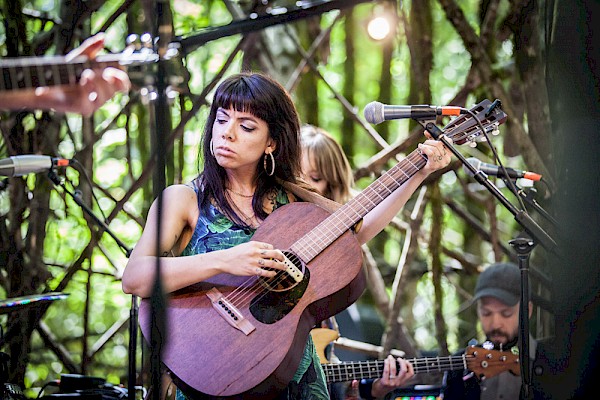 Hurray for the Riff Raff performing on the Woods Stage on August 6, 2016—click to see more photos by Sam GehrkeAnd while this year’s Pickathon boasts a formidable, diverse lineup with upstarts like Wet Leg and Goth Babe, a London invasion from experimental jazz stalwarts Sons of Kemet and Emma-Jean Thackray, returning favorites like Built To Spill, Valerie June, Hurray for the Riff Raff, and Frank Fairfield (performing with Meredith Axelrod), and world-renowned hip-hop icon GZA (performing with Phunky Nomads), it is the cosmic otherness of aesthetic and flow, design and vibe that truly knit together the intangible fabric of the festival. The idea of the peripheral, subconscious observations that attendees experience as they relocate themselves to the farm for the weekend helped the Pickathon team home in on the holistic experience they’d most like to help create. And as far as they know, it’s the first time anyone has approached a festival design in this way.
Hurray for the Riff Raff performing on the Woods Stage on August 6, 2016—click to see more photos by Sam GehrkeAnd while this year’s Pickathon boasts a formidable, diverse lineup with upstarts like Wet Leg and Goth Babe, a London invasion from experimental jazz stalwarts Sons of Kemet and Emma-Jean Thackray, returning favorites like Built To Spill, Valerie June, Hurray for the Riff Raff, and Frank Fairfield (performing with Meredith Axelrod), and world-renowned hip-hop icon GZA (performing with Phunky Nomads), it is the cosmic otherness of aesthetic and flow, design and vibe that truly knit together the intangible fabric of the festival. The idea of the peripheral, subconscious observations that attendees experience as they relocate themselves to the farm for the weekend helped the Pickathon team home in on the holistic experience they’d most like to help create. And as far as they know, it’s the first time anyone has approached a festival design in this way.
This conceptual epiphany yielded a partnership with PSU, as well as other regional design teams like Portland-based Joyful, to create a series of autonomous neighborhood design-builds that are all linked together by the farm’s natural features. Each neighborhood—the shady daytime zones dubbed the Grove and Windmill neighborhoods, the open meadow nighttime areas called the Paddock and Crossroads neighborhoods, as well as the always-lively Galaxy and Lucky Barn neighborhoods and, yes, a revamped Woods Stage in a new zone called simply the Woods Neighborhood—is being designed in a silo by separate teams to create a series of design-builds lined up together throughout the grounds. From storytelling, to design, to material sourcing, building and tearing down, teams like Joyful are creating what Schoenborn calls something that’s 10 times more ambitious than any other design concept Pickathon has endeavored previously.
Noah Dunham, a producer with Joyful, is overseeing the design of the Grove neighborhood experience. Dunham’s design team took on the project outside of their other business obligations “to fulfill work that sustains us on a personal or artistic level.”
“Partnering with Pickathon, for us, exemplified this practice in that we wanted to create a sustainable, welcoming and hopefully joy-inducing experience that aligns with the welcoming and inclusive vision of the fest,” Dunham says.
Joyful sourced some 80 percent of their materials from suppliers of used goods or scrap, and are building with an otherworldly, fictional narrative in mind that consists of “robots from planet Stoke who have crash landed onto Pendarvis Farm” to harvest enough “luv” to fuel their return home and sustain them into the next millennia.
“The world has been in such a state of upheaval since the onset of the pandemic that it was important to us and our thematic [approach] to make people smile,” Dunham says.
For Schoenborn, this design enlightenment began with the extremely popular Woods Stage—the beautifully built natural amphitheater nestled within the shade of the trees between multiple camping zones on the property.
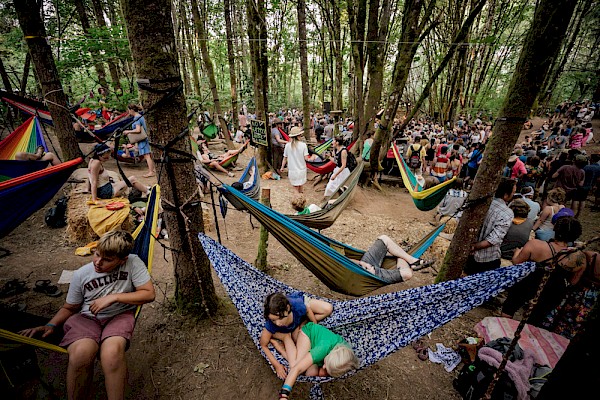 A woodland scene from Pickathon in 2018—click to see more photos by Tojo Andrianarivo“It was everyone’s favorite stage, and we were stoked about that, but it was also a lesson,” Schoenborn explains. “You can try to make cool things yourself, but nature kind of kicks your ass. You should take a lesson from that and learn how to lean into cool, beautiful spaces that exist already. We shouldn’t be doing things we could do in a parking lot; we should be doing things that are very specific to Pendarvis Farm and what it has.
A woodland scene from Pickathon in 2018—click to see more photos by Tojo Andrianarivo“It was everyone’s favorite stage, and we were stoked about that, but it was also a lesson,” Schoenborn explains. “You can try to make cool things yourself, but nature kind of kicks your ass. You should take a lesson from that and learn how to lean into cool, beautiful spaces that exist already. We shouldn’t be doing things we could do in a parking lot; we should be doing things that are very specific to Pendarvis Farm and what it has.
“What if we use natural tree cover during the day and not build a lot of shade because it’s way cooler to be in the woods? What if when the sun goes down, we start to go out into the big spaces and we don’t need shade? All of those things informed us. The actual carbon footprint to build this festival would be humongously reduced if we leaned into time of day and places. It was so freakin’ obvious.”
Additional enhancements for this year’s festival (not counting the always impressive food and wellness aspects throughout the farm!) include the diversification of the performers themselves. Podcasts like Chapo Trap House and Off Book join featured comedians Amy Miller and Kyle Kinane among others. An armada of writers and poets are slated for intimate engagements, and a slew of amazing all-vinyl DJs who will be set up on side stages, and featured in the Galaxy and Lucky Barn after hours dance party realms.
“We rethought DJs across the board,” admits Schoenborn. “DJs fill in that space between music and you don’t know why you’re loving your time, but they’re controlling you. It’s an integral part of the fabric of Pickathon.”
This year marks the first time Salas-Harris has held the reins for booking, and the deep, far-reaching talent represented for Pickathon 2022 is, if not fully center stage, somewhere extremely close. The festival has a longstanding reputation for breaking newer bands, a phenomenon that Salas-Harris thinks comes naturally, though not without its fair share of hard work behind the scenes.
“Pickathon holds a really special place in a lot of people’s hearts in the industry,” Salas-Harris explains, who is also the artistic director for the PDX Jazz Festival, and co-founded the now-defunct Soul’d Out Music Festival in Portland. “It’s not just booking some bands in the woods somewhere, or having a big budget to bring in some big names or something like that. That’s very different. This is a cultural, community thing. Almost by default, every artist that comes to play the festival says it’s one of the best experiences they’ve ever had at a music festival. You hear that enough times as an agent or manager and you know there’s something there.”
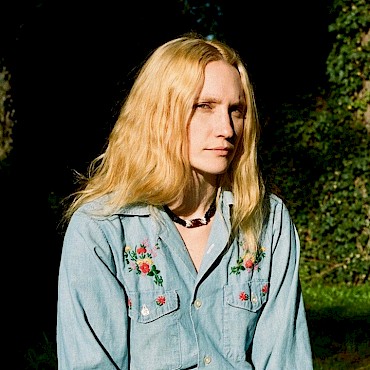 Kassi ValazzaA testament to that is the number of returning artists from Pickathons past, as well as the featuring of newer and local artists, like the captivating storytelling combined with Eastern Oregon twang of Margo Cilker or the woozy psych-country of Kassi Valazza, who was originally scheduled for the ill-fated 2020 fest.
Kassi ValazzaA testament to that is the number of returning artists from Pickathons past, as well as the featuring of newer and local artists, like the captivating storytelling combined with Eastern Oregon twang of Margo Cilker or the woozy psych-country of Kassi Valazza, who was originally scheduled for the ill-fated 2020 fest.
“The idea of them bringing me back after the last year fell through really does speak volumes,” Valazza says. “I can tell they really care about showcasing local artists and making sure the overall lineup is diverse and full of talent.”
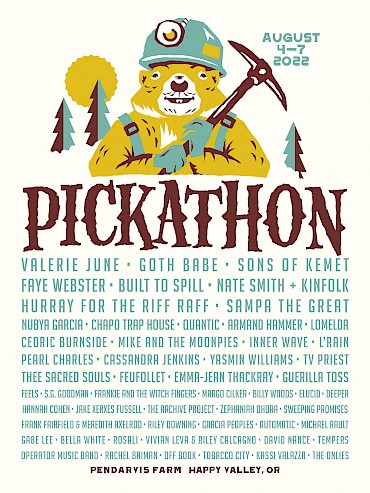 This year will be Valazza’s first time out at Pickathon.
This year will be Valazza’s first time out at Pickathon.
“I’ve heard the location is a magical fairy realm for lost souls and music lovers, so I can’t wait to experience it all for myself,” she says.
Whether it’s your first time at Pendarvis Farm, or you misplaced a hoodie at your campsite in the before-times and are desperately hoping it’s waiting for you at the lost and found, Pickathon 2022 is poised to be a truly magical respite for your 21st century ills.
“This year is about coming back and being really present and centered in that focus of this being a really fortunate thing we get to do,” Salas-Harris says. “It’s an incredible event, an incredible opportunity for the community, and there’s an enormous amount of work that goes into it.
“I think we can all really have a great time knowing this has all been done for that purpose.”

